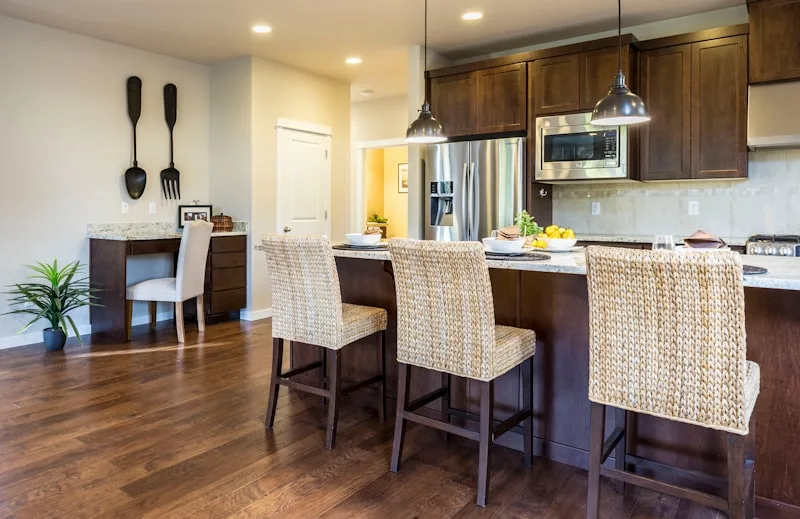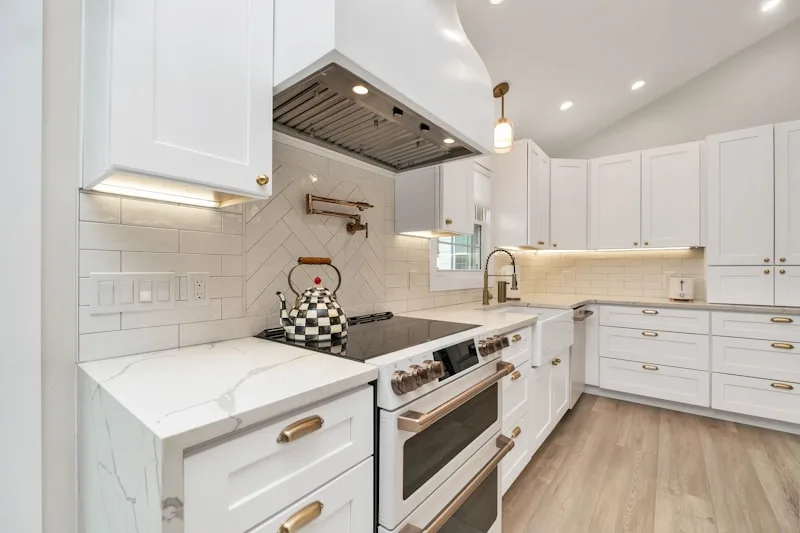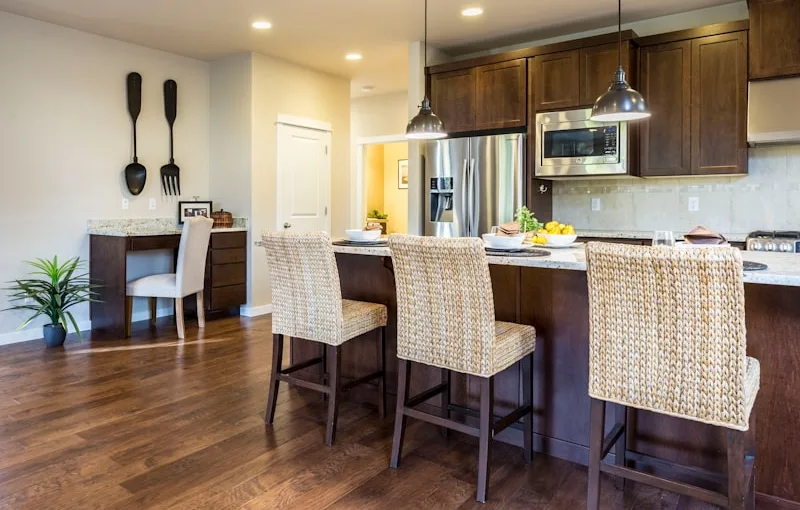Now, let’s talk about how to achieve that professional finish. First off, prep work is key. Imagine trying to bake a cake without mixing the ingredients properly; it just won’t turn out right! Start by removing all the cabinet doors and hardware. Give everything a good clean to remove grease and grime—nobody wants a sticky finish. Sanding is your next step. It’s like giving your cabinets a mini spa day, creating a smooth surface for the paint to cling to.

When it comes to paint, don’t skimp! Invest in high-quality paint designed for cabinets. It’s like choosing a fine wine for a special dinner; the results will be worth it. Use a primer to ensure even coverage and durability. Then, grab a foam roller for a smooth application—brushes can leave those pesky streaks behind. Apply thin coats, allowing each layer to dry completely. Think of it as building a solid foundation; the more care you take, the better the outcome.
Finally, don’t forget to seal the deal with a topcoat. This is your protective shield against scratches and stains, ensuring your beautiful cabinets stay looking fresh for years to come. So, roll up your sleeves and get ready to transform your kitchen into a space you’ll love!
Transform Your Space: The Ultimate Guide to Painting Kitchen Cabinets for a Fresh Look
First things first, let’s talk about prep work. Think of it as laying the groundwork for a masterpiece. You wouldn’t paint a canvas without a clean surface, right? Start by removing all the cabinet doors and hardware. Give everything a good scrub to eliminate grease and grime—trust me, your paint will thank you later! Once everything’s clean, a light sanding will help the paint stick like glue. It’s like giving your cabinets a little exfoliation!
Now, onto the fun part: choosing your color! Do you want a bold statement or a soft, calming hue? Picture your dream kitchen. Would a vibrant blue make you feel energized, or would a muted gray create a cozy vibe? The right color can completely change the mood of your space.
When it’s time to paint, use a high-quality brush or roller for a smooth finish. Think of it as icing a cake—smooth, even strokes will make all the difference. And don’t rush! Patience is key here. Allow each coat to dry completely before adding another layer.
Once you’ve achieved that perfect finish, reattach the hardware and doors. Voilà! You’ve just transformed your kitchen into a space that feels fresh and inviting. It’s amazing how a little paint can breathe new life into your home!
From Drab to Fab: Why Painting Your Kitchen Cabinets is a Game Changer
Think about it: your kitchen is the heart of your home. It’s where you whip up family meals, share laughs, and create memories. So why not make it a place that reflects your style? A splash of color can do wonders! Whether you opt for a bold navy blue, a soft sage green, or a classic white, the right paint can elevate your kitchen’s aesthetic in an instant. It’s like putting on a new outfit that makes you feel fabulous!
And let’s not forget about the cost-effectiveness. Instead of shelling out big bucks for a full remodel, a can of paint and a little elbow grease can work wonders. It’s a DIY project that can be both fun and rewarding. Plus, you’ll get that satisfying feeling of accomplishment when you step back and admire your handiwork.
But wait, there’s more! Painting your cabinets can also increase your home’s value. Potential buyers are often drawn to updated kitchens, and a fresh coat of paint can make your cabinets look brand new. It’s like giving your home a little facelift without the hefty price tag. So, if you’re ready to turn your kitchen from drab to fab, grab that paintbrush and let your creativity flow!
Unlocking the Secrets: How to Achieve a Professional Finish When Painting Kitchen Cabinets
First off, preparation is key. Think of it as laying the groundwork for a masterpiece. Start by removing all the cabinet doors and hardware. This not only makes the painting process easier but also helps you avoid those pesky drips and smudges. Give everything a good clean to remove grease and grime—nobody wants a sticky finish!
Next, sand those surfaces down. It’s like giving your cabinets a mini spa day. A light sanding creates a rough texture that helps the paint stick better. Don’t skip this step; it’s the difference between a professional look and a DIY disaster. After sanding, wipe away the dust with a damp cloth. You want a clean slate, not a sandy beach!

Now, let’s talk paint. Choosing the right type is crucial. Go for a high-quality, durable paint that can withstand the hustle and bustle of kitchen life. A satin or semi-gloss finish is often recommended because it’s easy to clean and reflects light beautifully. When applying, use a foam roller for a smooth finish and a brush for those tricky corners. Think of it as painting a canvas—every stroke counts!
Revitalize Your Kitchen: The Benefits of Painting Cabinets and Expert Tips for Success
So, why should you consider this DIY project? First off, it’s a budget-friendly way to breathe new life into your kitchen. Instead of spending thousands on new cabinets, a couple of cans of paint can do wonders. Plus, it’s a fun way to express your personality! Whether you’re into bold hues or soft pastels, the choice is yours. Think of it as giving your kitchen a stylish outfit makeover.
Now, let’s talk about some expert tips to ensure your cabinet painting adventure is a success. Start by prepping your cabinets like a pro. Clean them thoroughly to remove grease and grime—nobody wants a sticky finish! Next, don’t skip the sanding step; it’s like giving your cabinets a fresh canvas to work with. And remember, primer is your best friend. It helps the paint adhere better and enhances the final color.
When it comes to paint, opt for high-quality, durable options designed for cabinets. You want a finish that can withstand the hustle and bustle of daily life. And here’s a little secret: using a sprayer can give you that smooth, factory-like finish that brushes sometimes can’t achieve.
Frequently Asked Questions
How Do I Prepare Cabinets for Painting?
To prepare cabinets for painting, start by removing all hardware and doors. Clean surfaces thoroughly to eliminate grease and dirt. Sand the surfaces lightly to create a smooth base and improve paint adhesion. Fill any holes or imperfections with wood filler, then sand again once dry. Finally, wipe down the cabinets with a damp cloth to remove dust before applying primer and paint.
How Long Does It Take to Paint Kitchen Cabinets?
The time required to paint kitchen cabinets typically ranges from a few days to a week. This includes preparation, priming, painting, and drying time. Factors such as the number of cabinets, the type of paint used, and the method of application can influence the overall duration.
Why Should I Paint My Kitchen Cabinets?
Painting kitchen cabinets can dramatically enhance the appearance of your kitchen, making it look fresh and modern. It is a cost-effective way to update your space without the expense of a full remodel. Additionally, a new color can improve the overall ambiance and increase the value of your home.
What Materials Do I Need for Painting Cabinets?
To paint cabinets, you will need the following materials: high-quality paint (preferably acrylic or latex), primer, sandpaper (medium and fine grit), a paintbrush and roller, painter’s tape, a drop cloth, and a clean cloth for dusting. Additionally, consider using a paint sprayer for a smoother finish and a sealer for durability.
What Techniques Ensure a Professional Finish?
Achieving a professional finish involves several key techniques. Start with proper surface preparation, ensuring the area is clean and smooth. Use high-quality tools and materials to enhance the final appearance. Apply even coats of paint or finish, allowing adequate drying time between layers. Sand between coats for a smooth texture, and consider using a topcoat for added durability and shine. Finally, pay attention to lighting and environment during application to avoid imperfections.
